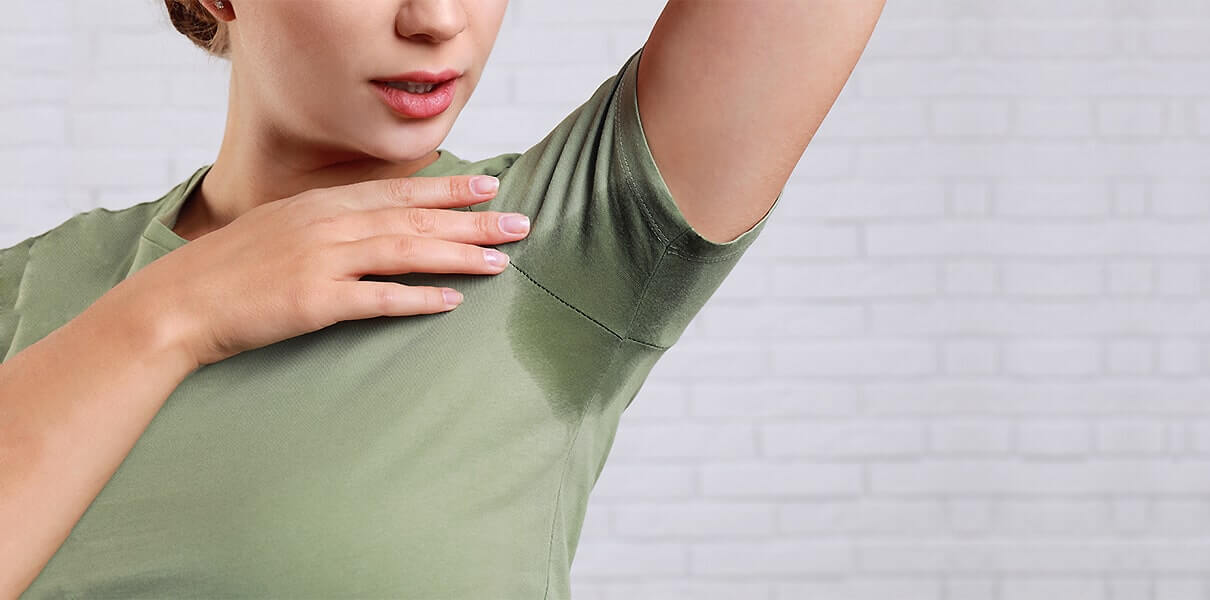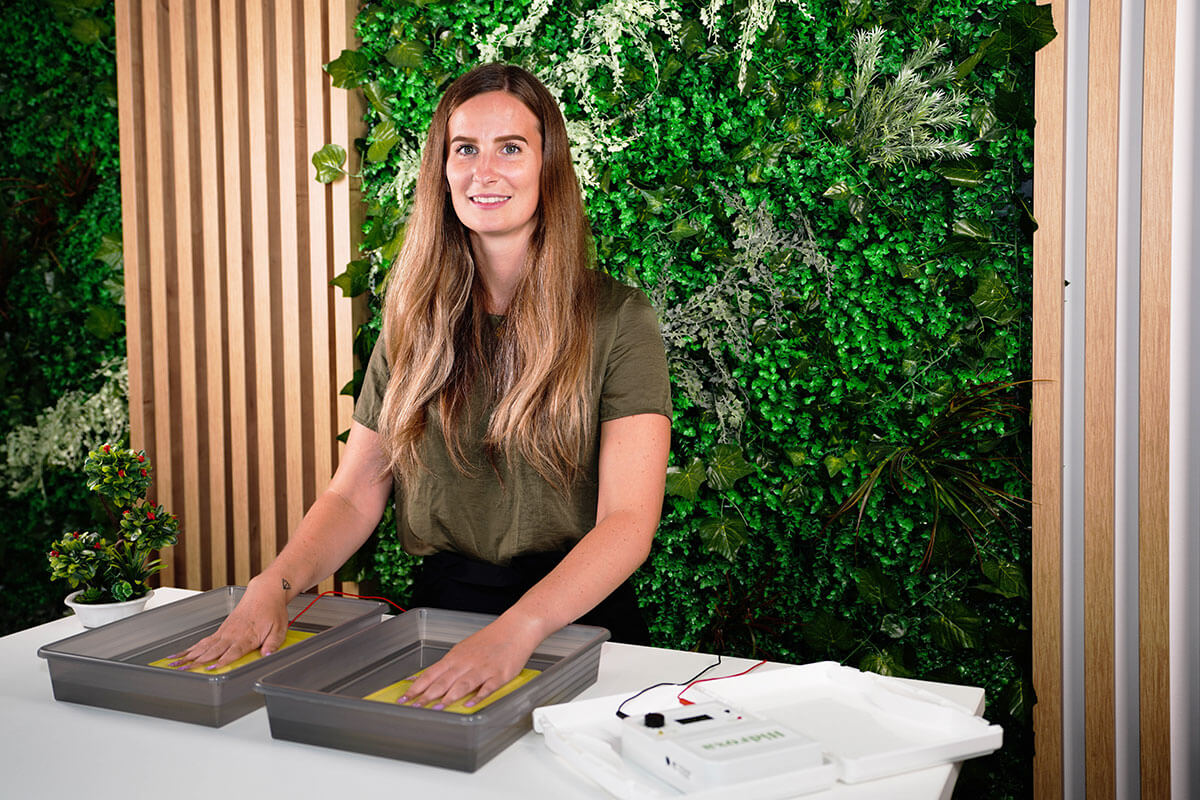Understanding the types of Hyperhidrosis: key symptoms and treatments
Have you ever felt like you're sweating way more than you should, even when it's not that hot or you're not exercising? If so, you might be one of the many people dealing with hyperhidrosis, a condition that causes excessive sweating. This condition leads to more sweating than the body needs for cooling, making simple activities and social interactions challenging. Hyperhidrosis is more than just a little extra sweat; it significantly impacts those who struggle with it.
What Exactly Is Hyperhidrosis?
Hyperhidrosis is when your body sweats more than it needs to cool down. It's like your sweat glands are always turned on high, even when you don't need them to be. Hyperhidrosis can be categorized into mainly two types: primary hyperhidrosis, where the excessive sweating isn't caused by another health issue, and secondary hyperhidrosis, which is sweating due to another medical condition.
The main types: Primary and Secondary hyperhidrosis
- Primary Hyperhidrosis often targets specific areas like your palms, feet, underarms, or face. But it can also be generalized. It usually starts in childhood or adolescence and might run in the family.
- Secondary Hyperhidrosis is due to conditions like diabetes or thyroid issues. It can also be a side effect of different medications.
While preventing hyperhidrosis might not always be possible, especially for the primary type, managing symptoms can make a significant difference. Strategies include using clinical-strength antiperspirants, steering clear of known triggers, and keeping cool whenever possible.
The treatment landscape for hyperhidrosis is varied, ranging from topical applications for milder cases to more involved options like medication or surgery for severe situations. The choice of treatment heavily depends on the hyperhidrosis type and its impact on one's life.
Living with hyperhidrosis extends beyond physical discomfort; it can also affect social interactions, confidence, and can lead to skin infections or other complications. Yet, with appropriate management strategies, those effects can be minimized.
For anyone suspecting they have hyperhidrosis, consulting with a healthcare provider is crucial. They can help diagnose the type of hyperhidrosis and suggest effective treatment options. While the condition is indeed challenging, advancements in treatments offer hope. With the right approach, managing excessive sweating is achievable, paving the way for a more comfortable and confident life.
Hyperhidrosis might seem like an insurmountable obstacle, but with today's knowledge and treatments, it doesn't have to be. Understanding your condition, seeking professional advice, and exploring available treatments can help you lead a life not defined by sweating. Whether it's making lifestyle adjustments, using antiperspirants, or seeking more advanced treatments, there's a path forward for those willing to take that first step.

Hyperhidrosis symptoms
If you find yourself constantly battling with sweat in ways that others don't seem to understand, know that your experiences are valid and more common than you might think. Here, we delve into the symptoms of hyperhidrosis, highlighting not just the physical but also the emotional landscapes shaped by this condition.
Palmar Hyperhidrosis (Hands)
- Physical manifestations: Your palms may often be wet, clammy, and cold, making everyday tasks like writing, driving, or using a smartphone a challenge.
- Emotional and social implications: Handshakes transform from simple greetings to moments of anxiety, potentially affecting social interactions and professional encounters.
- Unique characteristics: Unlike typical sweating triggered by heat or exercise, your palms might sweat excessively even in cool conditions, without any evident reason or due to mental stress or excitement.
Plantar Hyperhidrosis (Feet)
- Physical manifestations: Similar to your palms, your feet might also be constantly wet and clammy, leading to discomfort and even causing your feet to slip within your shoes.
- Emotional and social implications: The constant worry about foot odor and the visible sweat through shoes can make public and social settings daunting, limiting the types of footwear you feel comfortable wearing.
- Unique Characteristics: This type of sweating might not only make socks and shoes damp but can also increase the risk of fungal infections, adding a layer of health concern to the daily discomfort. Even if the sweat in this area is odorless, bacteria on the skin can create a bad smell and ruin shoes.
Axillary Hyperhidrosis (Armpits)
- Physical manifestations: Excessive sweating in the armpits can soak through clothing, challenging to manage with regular antiperspirants.
- Emotional and social implications: The visible sweat marks can lead to embarrassment and a constant need to plan or change outfits, impacting self-esteem and social freedom.
- Unique Characteristics: Interestingly, this type of hyperhidrosis may lessen or even pause during sleep, offering a temporary reprieve from the day's challenges. Some people also suffer from bad odour in this area, despite good hygiene. This is called bromhidrosis.
Craniofacial Hyperhidrosis (Face/Scalp)
- Physical manifestations: Severe sweating on the face and scalp can feel like an unending battle, with sweat often dripping or causing makeup and hair products to fail prematurely.
- Emotional and social implications: It's particularly challenging to hide or manage sweating in these areas, leading to heightened self-consciousness in both personal and professional settings.
- Unique characteristics: These sweating episodes can happen unexpectedly, several times a week, without physical exertion or high temperatures as triggers. There is a special form of sweating in the face that is called gustatory sweating. You sweat in your face when you eat or eat certain foods.
In sharing these experiences, the goal is not just to outline the struggles but to illuminate the shared path of those navigating hyperhidrosis. Each symptom, while uniquely challenging, underscores a common need for understanding, support, and effective solutions. Remember, your journey is yours, but you're not walking it alone. There's a community out there who understands, empathizes, and stands ready to offer the support and solidarity you deserve.
Hyperhidrosis Myths: Beyond Hygiene and Nerves
Addressing the misconceptions surrounding hyperhidrosis is crucial in fostering a deeper understanding and empathy towards those who live with this condition. Misinformation can lead to stigma, isolation, and a delay in seeking effective treatment. Let's debunk some of the most common myths about hyperhidrosis and shed light on the reality of this challenging condition.
Myth: It's just poor hygiene
One of the most harmful misconceptions is that hyperhidrosis is the result of poor personal hygiene. This couldn't be further from the truth. Hyperhidrosis is a medical condition where the sweat glands are overactive, and it's not something that can be controlled or prevented by more frequent showering or the use of conventional antiperspirants. People with hyperhidrosis often go to great lengths with their hygiene routines to manage their symptoms, yet still face challenges with excessive sweating.
Myth: It only affects the nervous or stressed
Another common myth is that hyperhidrosis only affects those who are nervous or under a lot of stress. While it's true that stress and nerves can exacerbate sweating, hyperhidrosis itself is a physiological condition that can occur independently of emotional states. Individuals with hyperhidrosis can experience excessive sweating regardless of their mood or stress level, even in completely relaxed and calm situations. On the other hand, hyperhidrosis itself can often trigger stress and anxiety.
Myth: It's not a serious problem
Some might dismiss hyperhidrosis as a minor inconvenience rather than a serious medical issue. However, for those affected, it can have profound impacts on all aspects of life, from career choices and social relationships to mental health and self-esteem. The constant concern over visible sweat marks can lead to social withdrawal and anxiety, making it much more than a simple physical discomfort.
Myth: There's no real treatment
Many believe that there's no effective treatment for hyperhidrosis, leading some to not even seek help. In reality, there are several treatment options available, ranging from prescription antiperspirants and oral medications to more advanced therapies like B. toxin injections, iontophoresis, and even surgery for severe cases. With the right approach, individuals can find significant relief from their symptoms.
Myth: It's rare and uncommon
Lastly, there's a perception that hyperhidrosis is a rare condition. In fact, it's much more common than many people think, affecting millions worldwide. About 1-5 % of the world population are affected. Because those affected often suffer in silence due to embarrassment or lack of awareness, the condition may seem less prevalent than it actually is.
Hyperhidrosis management: Strategies for relief
While completely preventing hyperhidrosis might not be possible, especially for those with the primary condition, several strategies can be employed to manage its symptoms effectively:
- Use clinical-strength antiperspirants: Regular over-the-counter antiperspirants might not cut it for those with hyperhidrosis. Clinical-strength antiperspirants containing higher concentrations of active ingredients can offer more effective sweat control. They can reach up to 20% Aluminium Chloride which is the active ingredient.
- Identify and avoid triggers: Certain foods, beverages, and situations can trigger or worsen sweating. Spicy foods, caffeine, and stress are common culprits. Recognizing and avoiding these triggers can help manage symptoms.
- Stay cool: Simple lifestyle adjustments like choosing breathable, moisture-wicking fabrics, and maintaining a cool environment can also help reduce sweating episodes.
- Wearing cotton socks. Many with hyperhidrosis experience that when they wear socks their feet do not get sweaty; this has a calming effect on the whole body.
Exploring treatment options
For those seeking relief from hyperhidrosis, the medical field offers a variety of treatment options tailored to the severity and location of excessive sweating:

- Topical treatments: Beyond stronger antiperspirants, there are prescription creams and wipes specifically formulated to reduce sweating, particularly useful for facial hyperhidrosis. The Qbrexa wipes and the Antihydral cream are two examples. (Antihydral can often be bought without prescription now a days.)
- Medications: Oral medications can effectively manage sweating by temporarily reducing sweat production, though they may come with side effects that need to be considered. Anticholinergic pills like Oxybutynin and Glycopyrrolate are the most common medicines used to manage hyperhidrosis.
- B. toxin injections: Can be used to treat any location with hyperhidrosis. By blocking the nerves that activate sweat glands, B. toxin offers temporary relief from excessive sweating. The effect can last 3-12 months.
- Iontophoresis: This non-invasive treatment uses water to conduct a mild electrical current through the skin, effectively reducing sweating in areas like the hands and feet.
Surgical options: In severe cases, surgical interventions such as Endoscopic thoracic sympathectomy, which involves cutting or clamping the sympathetic nerves that control sweating in certain areas, can provide a more permanent solution. But the side effects and risks can be substantial.
Conclusion
The journey through hyperhidrosis is not a solo voyage. It's a path walked with healthcare providers who can offer diagnoses, treatments, and a listening ear. Whether you're navigating primary or secondary hyperhidrosis, the medical community has developed an arsenal of strategies to help you regain control over your sweat glands.
Hyperhidrosis, with all its drips and drops, doesn't have to drown out the joys of daily life. With the right approach, those living with excessive sweating can find effective ways to manage their symptoms and move forward with confidence. So if you're tired of sweat stains dictating your wardrobe choices or avoiding handshakes like the plague, remember: there's a wealth of options out there, waiting to help you dry off and live the life you deserve.